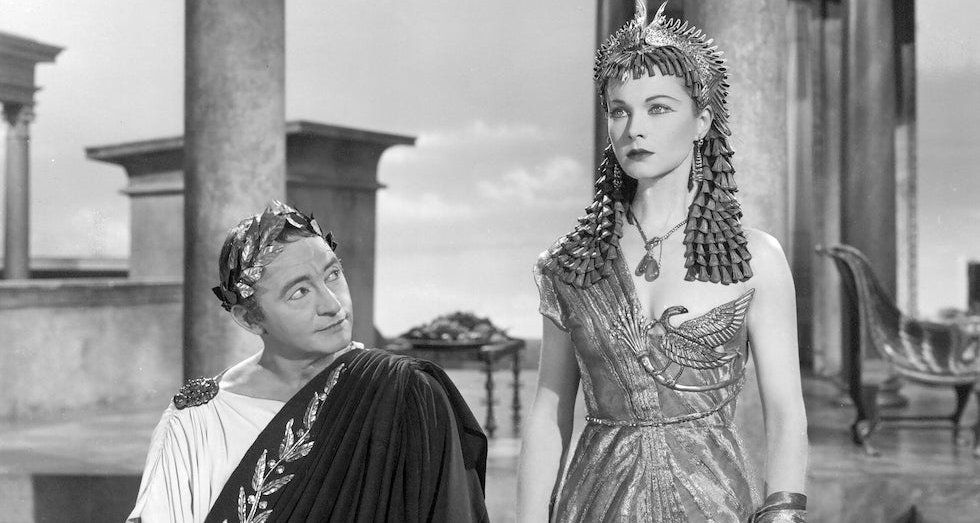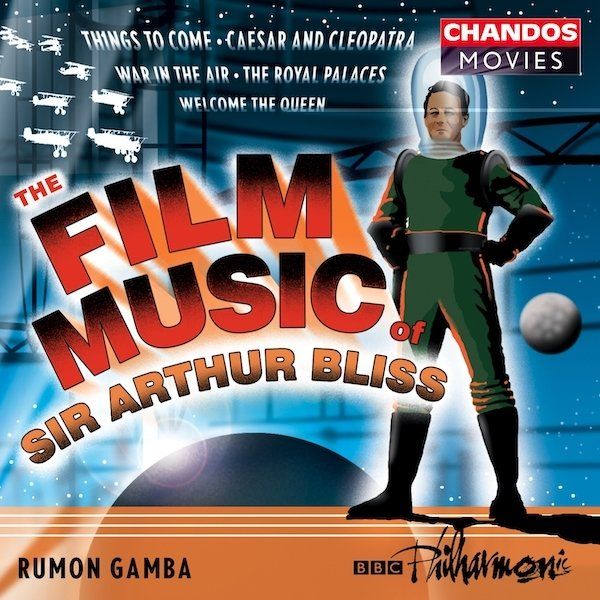The Film Music of Sir Arthur Bliss

Following a Marco Polo album in 1990 simply titled Arthur Bliss: Film Music (Marco Polo 8.223315) this is only the second complete CD devoted to the composer. It presents music from five films, though most significantly the long-anticipated first complete recording of Bliss' original score for the 1936 science fiction film Things To Come. Considered by many, myself included, to be one of the very greatest film scores ever written, and possibly the finest of all British film scores.
The film, the most expensive British production to that date was certainly ambitious. Adapted from HG Wells from his own pseudo-documentary futuristic novel, the story was nothing less than a sociological and political history of the coming century, featuring a Second World War beginning in 1940 and ending with the first moonshot in 2036. Wells personally chose Bliss to write the score, who agreed on condition he have complete artistic control over the use of his music. An excellent account of the making of the film, complete with a good amount about the relationship between Bliss and Wells and the development of the score can be found in Christopher Frayling's excellent BFI Classics book which has the same title as the film (ISN 0-85170-480-8). In the end Bliss did not get his wish. As with all films there was substantial re-editing and the music had to be adapted to the eventual release cut. This, and the subsequent history of the score are very well documented by Giles Easterbrook in the accompanying booklet. This history and the politics involved are labyrinthine in the extreme, though we are still left in the dark as to where the chorus added to the finale of the film originated. Suffice to say we finally have a recording of Bliss' score as he intended it, sans voices.
The score is presented in 11 tracks, many of which will probably be familiar. Most famous of all is the 'March', here given a strong reading. In essence the cues follow the design of the marvellous Sir Charles Grove's EMI LP recording with the Royal Liverpool Philharmonic made in the mid-70's and sadly not yet issued on CD (though the Colour Symphony which was also on the same LP has been issued on CD). Thus we have 'Prologue', 'Ballet For Children', 'March', 'Attack', 'The World in Ruins', then a cue which Groves omitted, 'Pestilence', depicting the plague in the aftermath of war. 'Excavation' is another unfamiliar cue, before the set-piece of 'The Building of the New World'. Then an appropriately mechanical 'Machines' leads to an 'Attack on the Moon Gun' which lacks a little of the required ferocity. Most strikingly different for those familiar with Groves, or indeed Bernard Herrmann's reading of the finale, is the newly reconstructed 7:33 'Epilogue'. This begins with the expected maestoso melody before diverting into a lengthy and regal homage to the brave new future before finally returning to the epic closing melody. It is wonderful to hear this, but one must express disappointment. The sheer shine-tingling grandeur Groves brought to this music is missing, the thrilling valedictory emotionalism Herrmann infused in every chord is absent. And why, because conductor Rumon Gamba throws the music away, taking everything that little bit too quickly and lightly, dispelling the gravitas of what should be an elegy, a requiem for the end of an old world and the timeless, heartbreaking yearning for the birth of the new. Its almost there, but yearn and urge him on as we might, Gamba never quite goes onward and up to reach the stars. But then, why wish for the stars when we have the moon, or at least the moon gun.
Things to Come comprises 32 minutes of the album and even with the flawed finale is sufficient to warrant the purchase of this release. However, there is more good, if not as good, music to come. Welcome the Queen is a six minute piece from a Pathé newsreel which Bax wrote as Master of the Queen's Music in 1954 (he had succeeded Sir Arnold Bax the previous year). It is typical of Bliss' regal music, and goes well with the 15-miunte complete score the composer wrote for a 1966 BBC TV documentary The Royal Palaces of Britain - here a premiere recording of the original version of this music. The album ends with another premiere and another piece from 1954, the theme from a major BBC documentary series, War in the Air. It is a fitting conclusion and a fine companion to Bliss' music from the 1936 film Conquest of the Air, a suite from which can be found on Silva Screen's Classic British Film Music.
Before this is yet another premiere, a 17-minute suite from Bliss' unused score for the 1944 film Caesar and Cleopatra. In a month which also sees the premiere release of Alex North's complete original soundtrack to Cleopatra (1963) this is a most fortuitous coincidence. As the booklet records, there are many parallels between this score and Things to Come, not least that this was also to become Britain's most expensive film to date, and was likewise based on the work of a celebrated writer, in this case George Bernard Shaw. Bliss eventually found the director impossible to work with an left the project, the finished film being scored by George Auric (music from which score can be heard on George Auric: Film Music Chandos CHAN 9774, recorded by the same forces as on this present album). Here however we have a new suite, edited and arranged by Giles Easterbrook and Malcolm Binney, from Bliss' Caesar and Cleopatra. The eight movements are typical Bliss and avoid all attempts at period and/or ethnic styling and are almost in the form of a ballet, offering 'Overture', 'The Sea', 'Dance Interludes 1-3', 'Barcarolle', 'Memphis at Night' and 'Supply Sequence' (an allegro). The music takes a few plays to sink into the consciousness, and then acquires a firm hold. This is very good if not great Bliss, and it is most exciting to have this opportunity to finally hear.
One final word. The sound is first-rate and both the booklet and the CD itself beautifully designed with appropriately retro 1930's pulp science fiction magazine style imagery. Other than my disappointment with the epilogue of Things to Come, this is yet another feather in Chandos' cap, a very strong and imaginative addition to the superb Chandos Movies catalogue.

Chandos CHAN 9896
Country: Great Britain
Format: CD
Release Date: 24-Apr-2001
The BBC Philharmonic Orchestra conducted by Rumon Gamba
Originally published @ MusicWeb International © 2001
Text reproduced by kind permission of MusicWeb Founder, Len Mullenger



